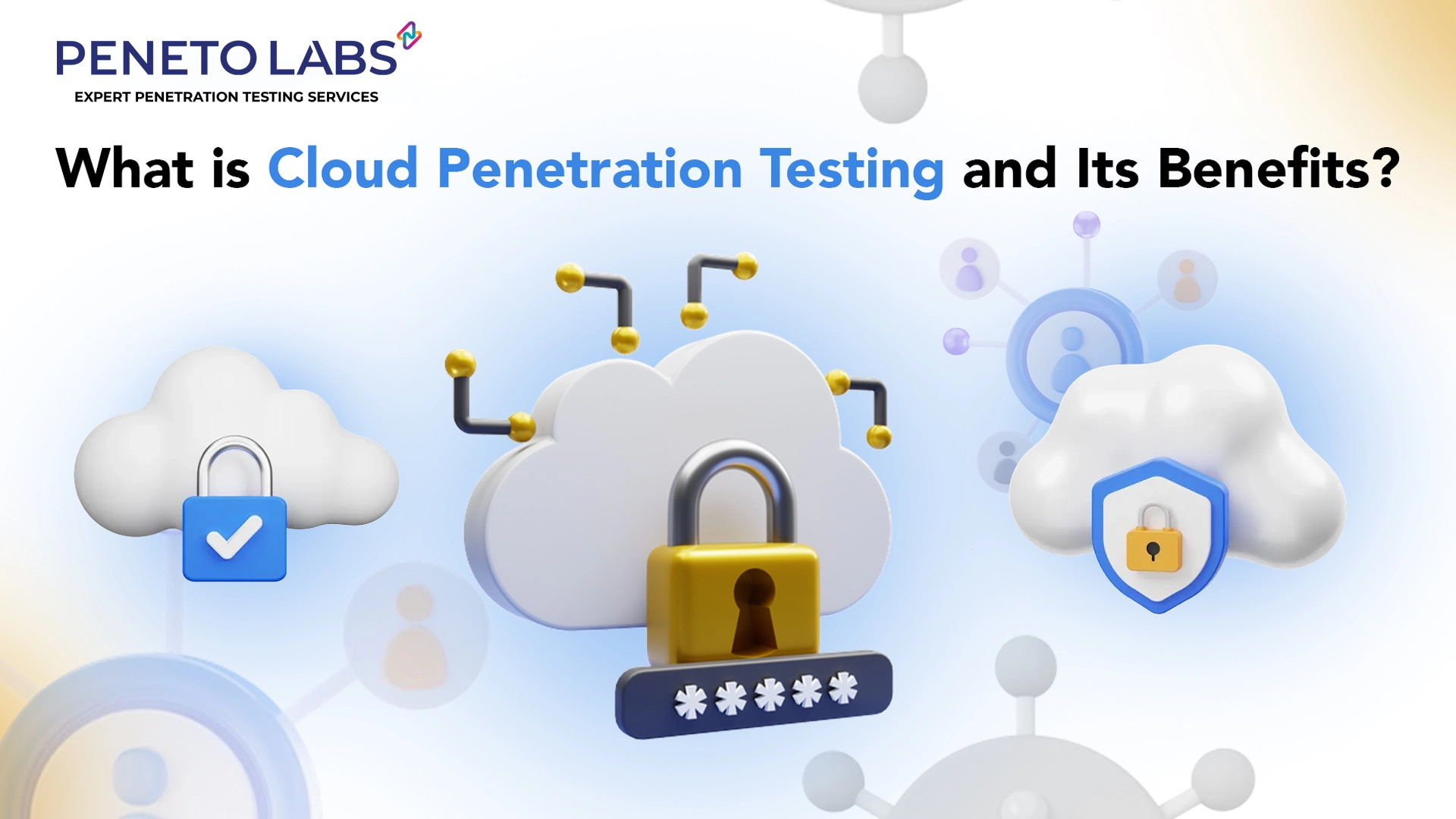What is Cloud Penetration Testing, and What Are Its Benefits?

What is Cloud Penetration Testing?
Cloud penetration testing, also known as “cloud pen testing,” is a process that involves security assessment tests that evaluate the security of cloud environments. This helps identify vulnerabilities within the cloud infrastructure, which developers can address promptly.
Cloud penetration testing aims to reveal vulnerabilities that attackers could target within the infrastructure. Some components of such vulnerabilities include APIs, databases, user interfaces, and more.
While traditional penetration testing targets on-premises infrastructure, cloud pen testing focuses on the security of cloud environments. Hence, organizations implement cloud penetration testing to protect their sensitive data and maintain the integrity of cloud infrastructure.
Importance of Cloud Penetration Testing
Cloud environments are more likely to be targeted by malicious actors than traditional infrastructure. In such cases, cloud pen testing assesses, identifies, and provides a comprehensive assessment. Moreover, the cloud service provider and the customer deal with the security aspect of cloud computing. This helps secure data, access controls, infrastructure, and more. In addition, cloud pen testing helps businesses fulfill their security obligations and ensure they offer a robust security strategy.
Cloud Penetration Testing Methods
Preparation and Planning
Each model presents distinct challenges and demands tailored testing approaches. The next step is to define clear objectives and scope, which helps identify key assets, cloud infrastructure, and services to be tested during cloud penetration tests. Further, cloud service providers follow strict policies, which help them obtain necessary permissions and comply with guidelines for seamless service.
Testing Phases
- Reconnaissance: The test begins by collecting all information about the cloud, such as configurations, infrastructure, and others. Pen-testers use this information to identify potential attack vectors, such as exposed APIs, unpatched vulnerabilities, and misconfigured settings.
- Vulnerability Assessment: This phase includes using tools and techniques to examine the cloud environment for potential vulnerabilities, such as outdated software and misconfigurations.
- Exploitation: Testers attempt to exploit identified vulnerabilities to gain access, which helps identify potential impacts.
- Post-Exploitation: In this phase, the impact is assessed. Testers evaluate the effectiveness of ongoing controls to prevent future attacks.
- Reporting and Remediation:Testers prepare a comprehensive report outlining findings and providing recommendations for mitigation. This also helps collaborate with cloud service providers to address vulnerabilities.
Tools and Techniques
Benefits of Cloud Penetration Testing
- Improved Security Posture: Cloud penetration testing lets organizations detect weaknesses by actively identifying vulnerabilities and swiftly addressing issues. The process also helps strengthen ongoing controls. Organizations use these weak points to fortify defenses and enhance their security posture.
- Compliance and Regulatory Requirements: Organizations must comply with the latest security regulations, such as GDPR, HIPAA, and PCI-DSS. Hence, cloud pen testing helps comply with industry standards and informs stakeholders and auditors about security posture. This commitment ensures trust and credibility among regulatory bodies, customers, and businesses.
- Risk Management: Identifying vulnerabilities before damage helps safeguard sensitive data from malicious actors. Consequently, cloud pen testing helps protect data and reduces the risk of data breaches. This also minimizes potential financial and reputational damage.
- Optimized Cloud Utilization: Cloud pen-testing ensures that cloud configurations and deployments are secure. This helps enhance the performance and reliability of cloud services. Additionally, a secure and efficient cloud environment maximizes the benefits.
- Cost Savings:Data breaches’ financial and legal repercussions can be significantly high. With cloud pen testing, organizations can avoid high costs by preventing security incidents before they occur. Also, regular testing helps reduce the need for emergency responses.
- Increased Trust and Confidence: Cloud pen-testing also helps build trust among partners, customers, and stakeholders.
Common Threats in Cloud Computing
- Data Breaches: Cyber attackers can steal sensitive data stored in the cloud, resulting in severe impact. Such loss can be a financial loss, legal repercussions, or reputational damage.
- Misconfigurations: Common misconfigurations can expose sensitive information and create significant security vulnerabilities in the cloud environment.
- Insecure Interfaces and APIs: APIs interact with cloud services and can be significant threats if not handled correctly. If not done right, APIs can expose sensitive information, leading to inadequate authentication, lack of encryption, and other issues.
- Account Hijacking: Malicious actors use many techniques to hijack cloud accounts. To avoid such attacks, use multi-factor authentication, create strong passwords, and be aware.
- Insider Threats: These are common from individuals within the organization who use sensitive data. Hence, implementing robust policies, limited controls, and using DLP to conduct background checks.
- Denial of Service (DoS) Attacks: aim to disrupt cloud services’ functioning, leading to degraded performance, service outages, and more. To mitigate such attacks, cloud providers help implement robust security measures and incident response plans.
Conclusion:
So, to get further information on cloud penetration testing, contact Peneto Labs today!
WhatsApp us
